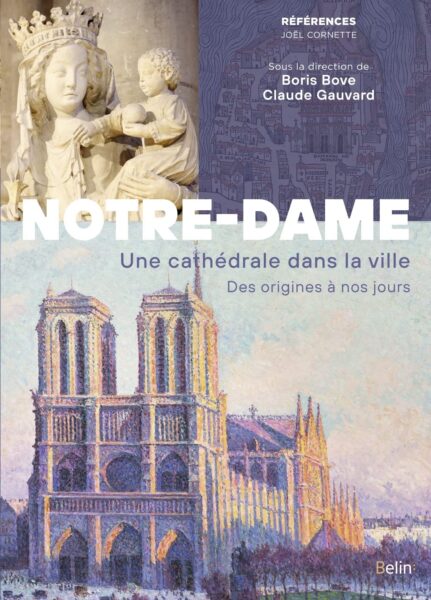Two Exhibitions at the Medieval Museum of Cluny in Paris celebrate the reopening of Notre Dame de Paris. One features the medieval sculptural legacy

The Cluny Museum preserves a significant part of the sculpted medieval decoration of the Notre Dame Cathedral in Paris.
These sculptures have not been the subject of an in-depth study since the early 1980s. The exhibition, “Making Stones Speak. Medieval Sculptures of Notre Dame”, promises to present knowledge about this collection by revealing the results of the major study and restoration program carried out since 2022.
In addition to the works usually presented in the room dedicated to the Cathedral of Notre-Dame, the exhibition includes pieces never before shown to the public. A selection of fragments evokes the missing bodies of the colossal statues in the Gallery of Kings.
Erected above the portals of Notre-Dame in the 13th century, this Gallery of Kings was at the time a great innovation. Breaking the vertical lines of the facade a long horizontal bar was added to position the series of the the Old Testament Kings as elected by God. Later, Parisians came to identify the statues as representing the French kings.
In 1792, after the abolition of the monarchy, the twenty-eight statues overlooking the west facade of Notre-Dame de Paris were taken by revolutionaries for effigies of the Kings of France. Accordingly, they were beheaded, and thrown into the forecourt. Discoverede in a garden in 1977, they now take pride-of-place in the Medieval Museum in Paris.
Also, A showcase devoted to the statue of Adam, a masterpiece of Gothic sculpture, traces its eventful journey to the present day.
The scenography also restores the layout of the restored fragments of the Sainte-Anne portal and the lintels of the Last Judgment portal. The traces of polychromy found in these works are also highlighted.

The exhibition finally presents an opportunity to unveil to the public for the first time around thirty fragments of the rood screen from the 1230s unearthed during preventive archaeological research conducted by Inrap (National Institute for Preventive Archaeological Research) since spring 2022.
Thus, nearly 120 works mark the visitor’s journey as they encounter the exterior and interior sculpted decor of Notre Dame before the destruction of the modern era. To contextualise these works, loans from major institutions such as the Louvre Museum and the Carnavalet Museum – History of Paris, from the Cathedral’s lapidary repository and private collections provide further insight into the subject.
This exhibition presents the results of an ambitious study and restoration program conducted for almost three years in partnership with the Center for Research and Restoration of Museums of France (C2RMF) and the Laboratory for Research into Historical Monuments (LRMH).
Visit:
Making the Stones Speak
19.11.2024 – 16.03.2025
Musée de Cluny, Paris
READ:
 Notre-Dame de Paris. Une cathédrale dans la ville. Des origines à nos jours
Notre-Dame de Paris. Une cathédrale dans la ville. Des origines à nos jours
Ed. by Boris Bove and Claude Gauvard
Belin References April 27, 2022
This book published in 2022 is a collaborative effort of twenty archaeologists, historians, and arthostorians retracing the history of the famous Cathedral, which for nearly a 1000 year has been the central symbol of both Paris and France. complete with more than a hundred photos, maps, reconstructions it centres Notre-Dame at this religious, social, political, cultural and urban history.
